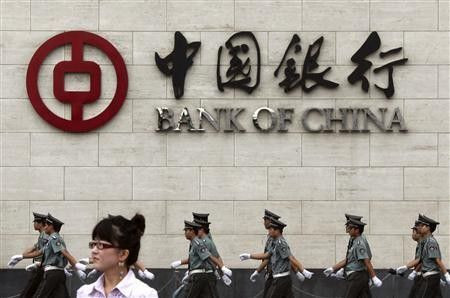Chinese Premier Wen Jiabao Calls For Interest Rate, Yuan Reforms

China will push forward market-based reforms on interest rate systems and on the currency regime, outgoing Premier Wen Jiabao said on Monday during a visit to the central bank.
“We will steadily push forward market-based liberalization of interest rates and improve the yuan exchange rate formation mechanism, while expanding international businesses of yuan to gradually realize capital account convertibility of the currency," the state-run Xinhua news agency quoted Wen as saying during an inspection tour.
To gradually make the yuan convertible under the capital account, the government should also work to expand the use of the yuan in cross-border trade and investment, Wen said.
In a statement released late Friday, the People’s Bank of China said it will start short-term liquidity operations (SLOs) as additional tools to manage cash supply.
Twelve big-to-medium-sized banks will be participants in SLOs, and repurchase agreements (repo) and reverse repurchases (reverse repo) with a maturity of up to seven days will be the main tools. Currently, the PBoC conducts open market operations (OMOs) on Tuesday and Thursday every week. Since last year the most-used tools have been 7-day, 14-day and 28- day repos (or reverse repos).
Friday’s announcement has prompted a lot of speculation about what it means for monetary policy in China.
Societe Generale’s economists believe this is “another major step” towards interest rate liberalization, and that the PBoC is in the process of moving towards a price-based modern monetary policy regime, and the old policy tools, including benchmark lending and deposit rates will be gradually phased out. Likewise, the use of variations in the required reserve ratios (RRRs) as a policy tool is likely to become less frequent.
“As the systems in more mature economies, the central bank will guide market rates with routine liquidity operations and central bank repo rates will become the policy rates,” Societe Generale's Wei Yao wrote in a note to clients.
Beijing keeps tight control of lending rates and bank reserve requirements, which differs sharply from how the U.S. Federal Reserve and other major global central banks typically operate.
The PBoC's "heavy-handed tools" cause interbank rates -- or the rates at which banks lend to one another -- to become volatile, according to Bank of America Merrill Lynch economists Ting Lu and Xiaojia Zhi. That makes them unlikely to serve as the benchmark for bank lending or borrowing, they said.
The new efforts mark the PBoC "catching up with the common market-based practice adopted by other major central banks and preparing the PBoC for further liberalizing rates in China," they wrote.
The shift may improve the government’s ability to manage the world’s second-largest economy, which expanded 7.8 percent in 2012 -- the slowest pace in 13 years.
The PBoC cut interest rates twice between June and July and lowered RRR three times after late 2011. It has refrained from cutting interest rates or RRR since, opting instead to inject short-term cash via open market operations into the money markets to avoid fanning inflation and property risks.
China’s central bank injected a net 941 billion yuan ($151.26 billion) worth of cash into the banking system in the second half of last year, almost double the 497 billion yuan it did in the preceding period.
The 12 lenders targeted by the PBoC for the reform are: Industrial and Commercial Bank of China (SHA: 601398), Agricultural Bank of China Ltd (SHA: 601288), Bank of China (HKG: 3988), China Development Bank, Bank of Communications Co Ltd (SHA: 601328), China CITIC Bank Corporation Limited (HKG: 0998), China Merchants Bank Co., Ltd (SHA: 600036), China Everbright Bank Co., Ltd (SHA: 601818), China Minsheng Banking Corp Ltd (SHA: 600016), Industrial Bank Co., Ltd. (SHA: 601166) and Shanghai Pudong Development Bank Co. Ltd (SHA: 600000).
© Copyright IBTimes 2024. All rights reserved.





















